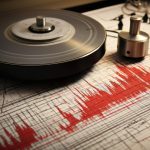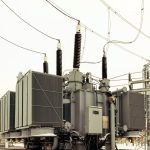The Importance of Seismic Shake-Table Testing for Substation Equipment.
Introduction
The increasing need for robust infrastructure in the face of natural disasters and other external threats is crucial for energy stability. Substation equipment in particular is the backbone of the energy transmission network.
Globally, utilities and manufacturers are proactively securing substation equipment against seismic hazards. These efforts involve a spectrum of measures, ranging from analytical methods to extensive testing approaches aiming to predict the equipment’s dynamic response to real ground motions.
Testing, however, requires considerably more engineering efforts, has a higher economic impact and elongated timeframe compared to analytical methods. So, one might question the rationale behind investing in testing when Finite Element Method (FEM) analysis can be conveniently conducted from the comfort of your office.
What is Shake-table Testing
Seismic qualification via testing usually takes place in a specialized shake-table laboratory. In such laboratories, a table, powered by actuators, is utilized to precisely replicate realistic ground motions. The tested equipment, along with its instrumentation, is securely mounted on the shake table. Among various experimental methods, Time-history shake-table testing stands out as the preferred approach for ensuring the seismic resilience of equipment.
Benefits and necessity of seismic qualification through Shake-Table Testing
Despite the associated efforts and costs, shake-table testing stands out as an invaluable tool for fortifying substation resilience. Seismic testing can assess the actual dynamic behavior of equipment in real-life conditions without relying on assumptions or simplifications, often required in FEM analysis. Moreover, it is the sole method ensuring not only structural integrity but also continuous functionality during and after an earthquake event. As a result:
- Substation seismic standards, such as IEEE 693, dictate testing for critical components while other standards, like IEC or ETG1.020, treat this as an alternative method to analysis.
- Utilities may include shake-table testing requirements for essential equipment in their project specifications.
- Various countries demand compliance with distinct seismic norms. Shake-table testing stands out as the optimal choice for ensuring the reusability of the qualification, particularly when supplying the same equipment design on a global scale.
- When a single qualification is applicable to multiple units, costs are minimized. Manufacturers can ensure both functionality and structural integrity during the equipment’s R&D stage. The test data can also offer valuable insights for any future design developments.
Conclusion
In summary, seismic qualification through shake-table testing proves essential for achieving substation equipment resilience. Despite initial efforts and costs, the method’s advantages, including realistic evaluations, continuous functionality assurance, and cost-effective application to multiple units, highlight its importance. As the industry focuses on resilient energy infrastructure, stakeholders are encouraged to prioritize shake-table tests as an integral process of their equipment validation and design. This proactive approach will undoubtedly contribute to the enhanced reliability and longevity of the energy systems.



Leave a Reply